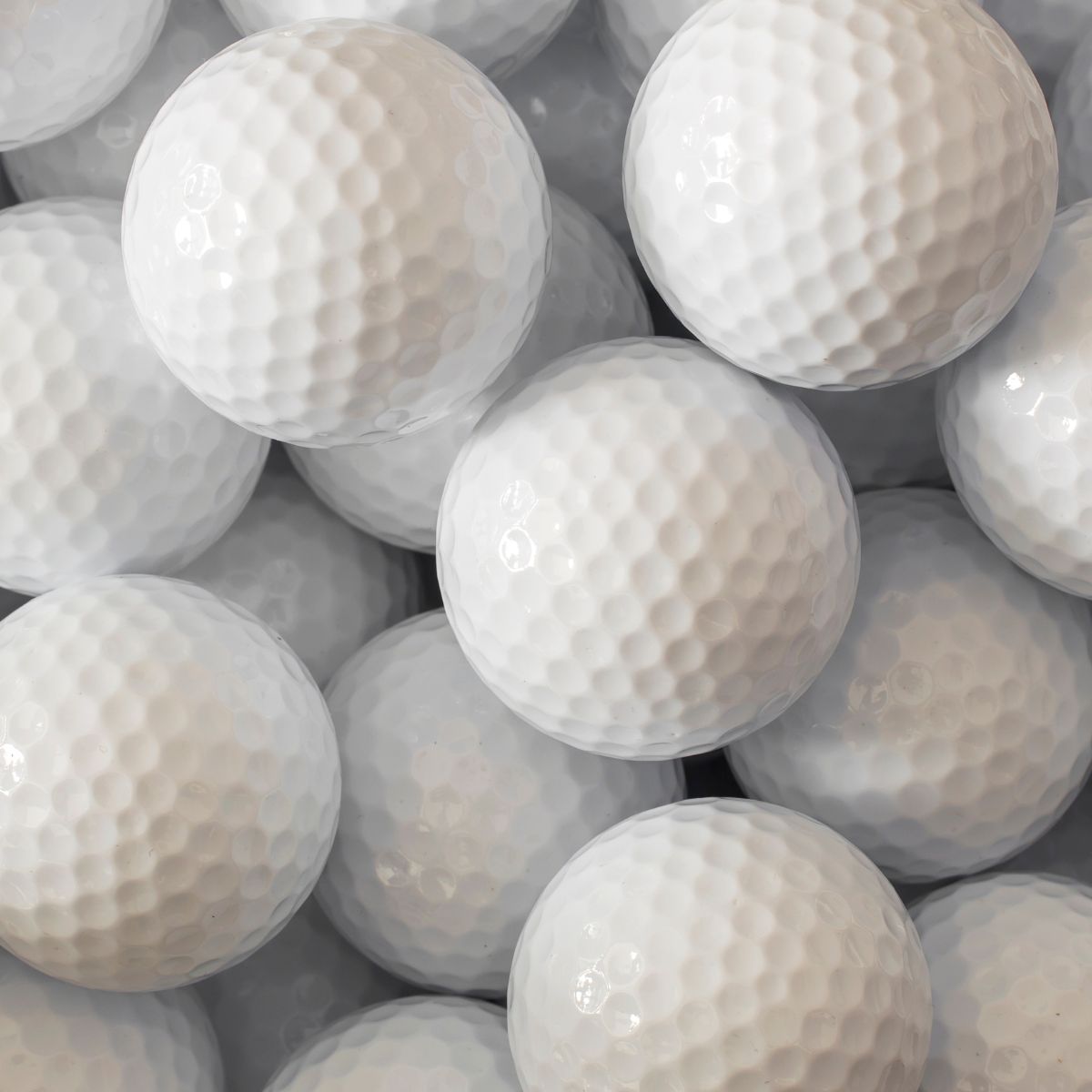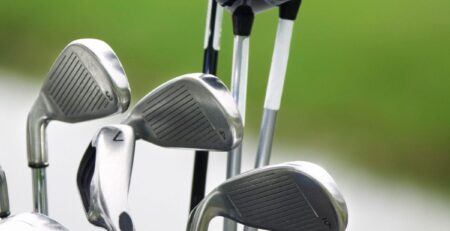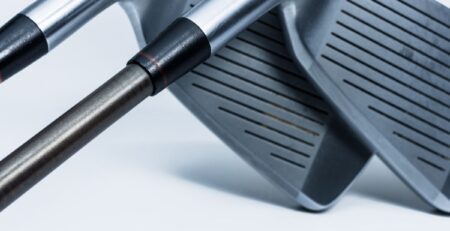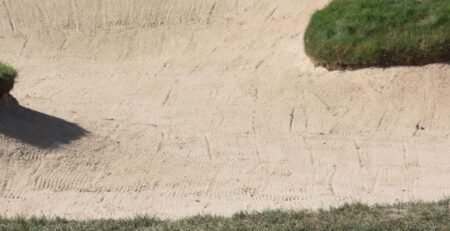Everything You Wanted to Know About Golf Balls (but were too afraid to ask!)
Understanding the intricacies of golf balls is often overlooked by many golfers, yet it plays a crucial role in improving your game. Golf balls are not just spherical objects that you hit with a club; they are sophisticated pieces of equipment designed to optimise your performance on the course.
Whether you’re a novice golfer looking to gain insights or a seasoned player seeking to fine-tune your understanding, then this comprehensive guide will provide you with valuable knowledge to enhance your game. From the construction and types of golf balls to the science behind compression, spin, and dimples, we demystify the complexities and shed light on the factors that impact your shots.
Golf Ball Construction
To truly understand the performance of a golf ball, it’s essential to familiarise yourself with its construction. A golf ball comprises three fundamental components: the core, the cover, and the dimples. Each element contributes to the ball’s overall characteristics and behaviour upon impact.
The Core of a Golf Ball: At the heart of a golf ball lies the core, which determines its initial velocity and energy transfer upon impact. Cores can vary in composition and design, ranging from solid rubber to multi-layered constructions. Higher compression cores are typically found in distance balls, providing maximum energy transfer for increased distance. On the other hand, lower compression cores offer a softer feel and greater control, commonly found in balls suited for precise shots and short game finesse.
The Cover of a Golf Ball: The outer layer of a golf ball is known as the cover. It acts as a protective shell and influences the ball’s feel, spin, and durability. Golf ball covers are usually made of surlyn or urethane. Surlyn covers are more durable and provide a firmer feel, making them suitable for golfers seeking distance and durability. Urethane covers, on the other hand, offer enhanced spin control, a softer feel, and improved greenside performance, making them ideal for players who prioritise control and finesse.
The Dimples of a Golf Ball: The dimples on a golf ball may appear simple, but they play a critical role in optimizing its flight characteristics. Dimples create turbulence in the airflow around the ball, reducing drag and enhancing lift. The consistent and patterned arrangement of dimples helps the ball maintain stability and achieve a more predictable trajectory. Dimple designs can vary, and manufacturers invest significant research and development to optimise aerodynamics and enhance overall performance.
Materials Used in Construction of a Golf Ball: The materials employed in golf ball construction have a significant impact on the ball’s performance. The core materials can range from rubber compounds to advanced synthetic materials that offer specific characteristics like high energy transfer or a softer feel. The cover materials, such as surlyn or urethane, determine the ball’s durability, spin control, and feel upon impact. Manufacturers continuously innovate and experiment with different materials to create golf balls that cater to specific player preferences and playing conditions.
Types of Golf Balls
Golf balls come in various categories, each designed to meet specific player preferences and performance goals. Understanding the different types of golf balls can help you make an informed choice that aligns with your playing style and desired outcomes. Here are three common categories of golf balls:
Distance Golf Balls: Distance balls are engineered to maximise the length of your shots. These balls are designed to reduce spin and offer exceptional distance off the tee. They often feature a firmer core, which promotes higher initial velocity and lower spin rates. Distance balls are ideal for golfers who prioritise gaining extra yards and want to maximise their driving distance. They are commonly used by players with moderate to high swing speeds who seek greater overall distance and forgiveness.
Spin-Control Golf Balls: Spin-control balls are tailored for golfers who value precision and control. These balls have a softer feel and generate higher spin rates, allowing skilled players to exercise greater control over their shots. The enhanced spin helps with greenside performance, providing more stopping power on approach shots and better control around the greens. Spin-control balls are favoured by players who prioritise shot-shaping, finesse, and the ability to stop the ball quickly on the green.
Soft-Feel Golf Balls: Soft-feel balls are designed for golfers who prioritise feel and responsiveness. These balls have a softer core and cover, resulting in a more pleasing sensation upon impact. They offer enhanced feedback and are often chosen by players who value a buttery-smooth feel and excellent feedback on their shots. Soft-feel balls are suitable for a wide range of players, including those with slower swing speeds, as they can maximise distance while providing a comfortable and responsive feel.
Selecting the right type of golf ball depends on your skill level, swing speed, playing style, and personal preferences. Consider your priorities on the course, whether it’s distance, control, or feel, and choose a ball that aligns with your goals.
Golf Ball Compression
Compression is a crucial aspect to consider when selecting the right golf ball for your game. It refers to the degree of deformation the ball undergoes upon impact with the clubface. Understanding compression and its implications can help you optimise distance, feel, and control on the course.
What is Compression?
Golf ball compression is measured on a scale from 0 to 200 or higher, with lower numbers representing softer compression and higher numbers indicating firmer compression. The compression rating is influenced by the construction and materials used in the ball’s core. In simple terms, a lower compression ball will compress more upon impact, while a higher compression ball will deform less.
Distance: Compression plays a significant role in determining the distance a golf ball can travel. Lower compression balls, typically ranging from 50 to 70, are known for their ability to compress easily and generate higher launch angles. This increased deformation leads to longer carry distances, making them suitable for players with slower swing speeds. On the other hand, higher compression balls, ranging from 90 to 100 or more, are designed for players with higher swing speeds. These balls offer lower launch angles and reduced spin, resulting in increased roll and overall distance.
Feel: Compression also influences the feel of a golf ball upon impact. Softer compression balls tend to provide a more responsive and cushioned feel, allowing players to experience a greater sense of control and feedback. They offer a pleasant sensation and are often preferred by golfers who prioritise a softer and more comfortable feel during their shots. Firmer compression balls, while providing a different feel, can still offer excellent feedback and responsiveness to players who prefer a firmer impact sensation.
Control: Compression can affect the amount of spin a golf ball generates. Lower compression balls tend to produce more spin, particularly on shorter shots and approaches to the green. This increased spin allows for greater control over shot shaping and increased stopping power on the green. Higher compression balls, while generating less spin, may offer improved control for players with faster swing speeds who seek to reduce excessive spin and maintain a more penetrating ball flight.
Golf Ball Spin
Spin is a crucial factor that significantly influences the trajectory, accuracy, and stopping power of your golf shots. Understanding the role of spin and the differences between high-spin and low-spin golf balls can help you make informed decisions about which ball is best suited for your game.
The Importance of Spin
Spin plays a vital role in determining the flight path and behaviour of your shots. Backspin, which is the spin imparted on the ball during impact, creates lift, allowing the ball to stay in the air longer and achieve a higher trajectory. It also affects the amount of roll the ball experiences upon landing. Side spin, on the other hand, influences shot curvature and can cause hooks or slices.
High-Spin Golf Balls: High-spin golf balls are designed to generate more spin on both full shots and shots around the green. These balls feature softer covers and produce increased friction upon impact. The additional spin can be advantageous in certain situations. On approach shots, high-spin balls provide more stopping power, allowing the ball to land softly on the green and reduce roll-out. This enhances control and increases the likelihood of holding the green, especially on shots requiring precision and accuracy. High-spin balls are often favoured by skilled players who rely on shot shaping and want maximum control over their ball flights.
Low-Spin Golf Balls: Low-spin golf balls are engineered to reduce spin and promote a more penetrating ball flight. These balls typically have firmer covers and are designed to minimise the amount of backspin generated on full shots. The reduced spin results in a flatter trajectory, which can be advantageous in windy conditions as it helps to minimise the effects of crosswinds. Additionally, low-spin balls tend to roll out more upon landing, maximizing distance off the tee and providing added run on the fairways. Golfers with faster swing speeds and those seeking maximum distance and accuracy often opt for low-spin golf balls.
Choosing between high-spin and low-spin golf balls depends on your playing style, skill level, and the specific conditions you face on the course.
Golf Ball Fitting
Choosing the right golf ball is a critical aspect of optimizing your performance on the course. Golf ball fitting takes into account various factors such as swing speed, skill level, and playing conditions to help you select a ball that aligns with your individual needs. By undergoing a golf ball fitting process, you can enhance your distance, accuracy, and overall playability. Let’s explore the importance of golf ball fitting and provide guidance on how to choose the right ball for your game.
Maximizing Performance
Golf ball fitting is essential because different balls are designed to perform differently based on individual characteristics. Factors such as swing speed, launch angle, and spin rates vary from golfer to golfer. By using a ball that complements your specific swing characteristics, you can maximise distance, control, and feel. A well-fitted ball can help you achieve optimal launch conditions, reduce excessive spin, and increase overall consistency.
Swing Speed Considerations
One key aspect of golf ball fitting is matching the ball to your swing speed. Golf balls are typically categorised into three main groups: high compression, mid-compression, and low compression. High compression balls are better suited for higher swing speeds, as they require more force to compress, resulting in increased distance. Conversely, low compression balls are more suitable for slower swing speeds, as they compress more easily, generating optimal energy transfer and distance. Mid-compression balls offer a balance between the two extremes.
Skill Level and Playing Conditions
Consider your skill level and the playing conditions you encounter. Advanced players may prefer higher-spin balls that allow for enhanced shot shaping and control around the greens. On the other hand, beginners or golfers with slower swing speeds might benefit from low-spin balls that provide straighter ball flights and added forgiveness. Additionally, take into account the course conditions you typically play on, such as firm or soft fairways, and select a ball that offers the desired level of spin and feel.
Golf Ball Care and Maintenance
Proper care and maintenance of your golf balls are essential for preserving their performance and longevity. By implementing a few simple practices, you can ensure that your golf balls remain in optimal condition, providing consistent performance round after round.
Cleaning Golf Balls
Regularly cleaning your golf balls helps remove dirt, debris, and grass stains, ensuring optimal performance. Here’s a simple cleaning routine you can follow:
a. Fill a bucket or sink with warm water and add a mild dish soap.
b. Place the golf balls in the soapy water and gently scrub them using a soft brush or cloth.
c. Rinse the balls thoroughly with clean water to remove any soap residue.
d. Dry the golf balls with a towel or let them air dry before storing them.
Avoid Harsh Cleaners and Solvents
While it’s important to clean your golf balls, avoid using harsh cleaners or solvents that can damage the ball’s cover or affect its performance. Stick to mild soaps and avoid abrasive scrubbing tools or chemicals that may strip away the ball’s protective coating.
Golf Ball Storage
Proper storage is crucial for maintaining the performance and durability of your golf balls. Consider the following storage tips:
a. Keep your golf balls in a cool and dry place, away from direct sunlight and extreme temperatures.
b. Avoid storing golf balls in areas with high humidity, as moisture can seep into the ball and affect its performance.
c. Use a dedicated golf ball bag or container to protect them from dust, moisture, and potential damage.
Golf Ball Rotation
To ensure even wear and consistent performance, consider rotating your golf balls. By using a different set of balls for each round, you can distribute the impact and wear more evenly across your collection. This helps maintain consistent performance throughout multiple rounds.
Inspect for Damage
Before each round, inspect your golf balls for any signs of damage or wear. Look for cracks, cuts, or significant scuff marks that may affect the ball’s aerodynamics and performance. Discard any damaged balls and replace them with new ones to ensure consistent play.
By investing a little time and effort into the care and maintenance of your golf balls, you’ll not only enhance their lifespan but also enhance your overall playing experience. So, treat your golf balls with the attention they deserve, and watch as they reward you with consistent performance and improved confidence on the course.











